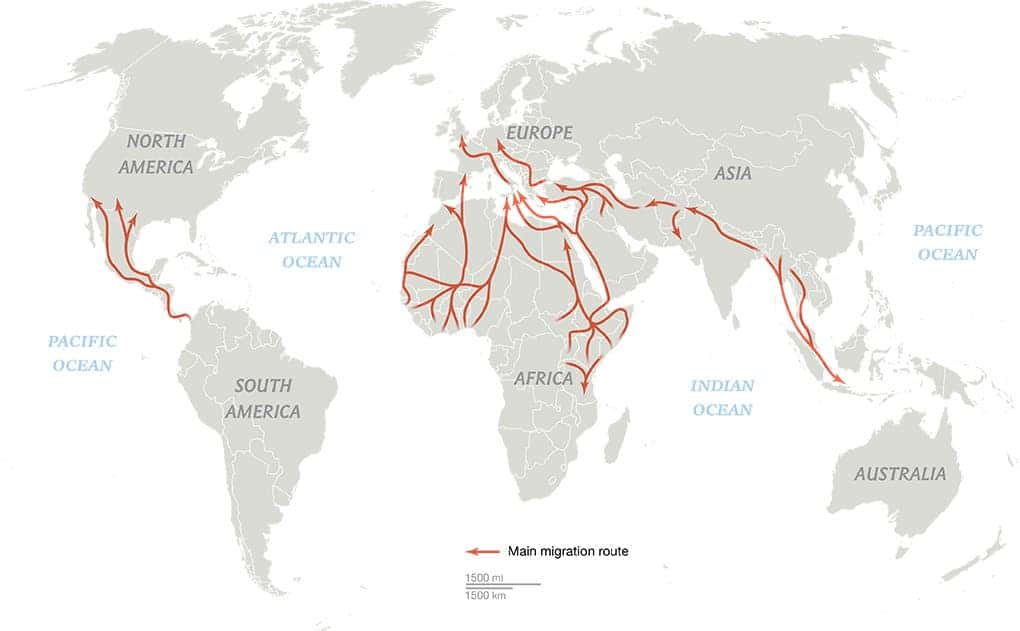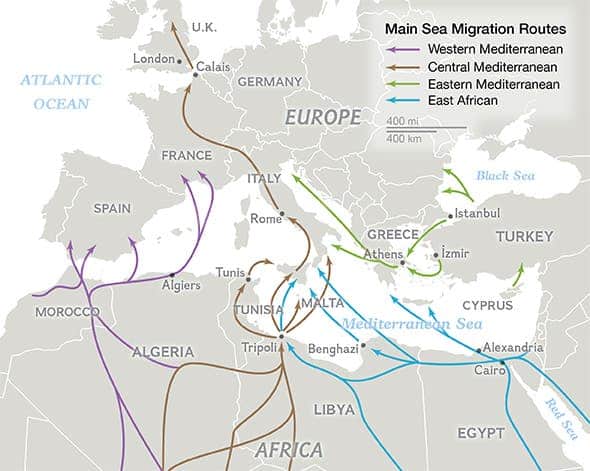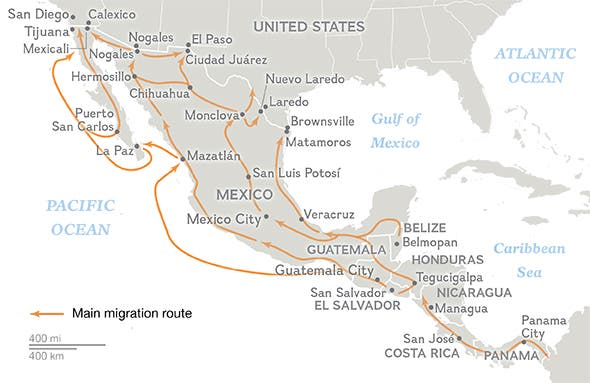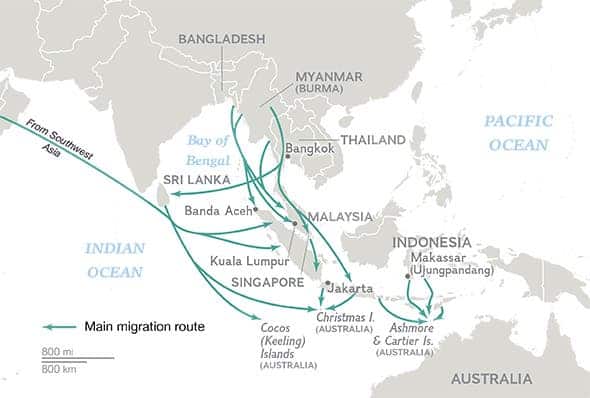Syrian refugees are making headlines all over the world, but while their story is worth covering, there are millions other refugees in Asia, Central America or Africa that are in the same boat. According to the U.N., 59.5 million people were displaced due to “persecution, conflict, generalized violence, or human rights violations” in 2014 or 8.3 million more than the year before. To escape persecution, refugees take hidden routes out of their own country which are often controlled by smugglers and can be extremely dangerous to cross. Everybody was heartbroken to learn about the story of three-year-old Aylan Kurdi, who was found washed ashore in Turkey, but few know that 2,900 other people died drowned or asphyxiated on their way to a safe haven this year alone. National geographic just released five great maps that explain the global forced migration patterns.
This is the most famous route news outlet choose to speak about, with the epicenter being people fleeing Syria, flocking for the EU.
“As of this week, the number of refugees fleeing the conflict in Syria approached 4.1 million. These Syrians in exile have sought shelter in camps and temporary housing in Turkey, Egypt, Iraq, Jordan, Lebanon and throughout North Africa. Almost half have landed in Turkey, according to the UN, but conditions there have been worsening.
The Eastern Mediterranean route—the passage long used by migrants crossing through Turkey to the European Union—has grown ever more crowded since the outbreak of war in Syria in 2011. Syrian routes have also been merging along easternmost points below the Mediterranean Sea of an East African migratory route that has long been used by people fleeing conflict in Somalia, the Democratic Republic of the Congo, and South Sudan.”
“Nearly 90 percent of those who attempt to reach Europe by sea come from ten countries, in descending order by percentage: Syria, Afghanistan, Eritrea, Nigeria, Pakistan, Iraq, Somalia, Sudan, Gambia, and Bangladesh”
“Poverty and violence in Mexico and Central America has uprooted millions. Many have taken the treacherous journey north along smuggling routes, increasingly controlled by drug cartels, towards the U.S. border. The human flow includes more than 68,000 unaccompanied minors attempting to cross the border between 2013 and 2014, according the U.S. Customs and Border Protection.
Long-simmering conflict in Colombia has resulted in more than six million internally-displaced people there while an increasingly violent drug trade in Honduras and El Salvador has fueled more destabilization in the region.”
“Political upheaval—including Muslim Rohingya refugees who have fled political repression in Myanmar—restrictive migration policies, and a lack of legal frameworks for refugees have made Southeast Asia increasingly dangerous for migrants. Human trafficking, forced labor and other abuses are also rife in the region, according to the UN.”














